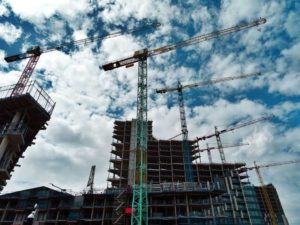The fact is, AI needs to “learn” to become intelligent. And just like humans, the more learning it does, the more intelligent it gets.
When you buy a product with AI in it, it should get more intelligent with time, because it “learns” as it consumes and analyzes data.
This is particularly true with AI-enabled video. In the context of security surveillance, the goal with AI is to have extremely high accuracy.
At the most basic level, you don’t need to be tracking dogs on your car lot – you need to be tracking people. So, as table stakes, the AI needs to be smart enough to recognize the difference between things like humans, animals and machines.
HUMANS
ANIMALS
MACHINES
Beyond that − and where AI gets really intelligent − is its ability to not only track humans, but also to identify with high confidence each human’s intentions. To be able to tell the difference between someone simply taking a short-cut across your property, and someone seeking to steal from your business.
And this also goes for machines – is the car that just pulled into the parking lot at midnight a problem? Or is it just someone trying to turn around? Well-trained AI can tell the difference and react accordingly.

Training AI to be able to identify threats with this level of detail is a function of data. AI needs the benefit of “experience” – the more data it’s fed the better it can tell the difference between behavior indicating innocent activity, and activity indicating a crime in process.
This is where the scale of a security surveillance video provider comes into play – the more AI deployments it has, the smarter its AI will become.
And, this is what gets us really excited at Pro-Vigil. We have tens of thousands of cameras deployed, each one collecting important data, training our AI with every event recorded.
Also, with the standard resolution in cameras increasing from 1080p to 4Kp, each camera now produces nearly 4x the data as the previous generation.
That allows us to feed data into our AI engine nearly 100 million times a month, which results in a system that’s becoming smarter and more effective every day.

With this level of intelligence, we can now provide more powerful and precise protective measures to customers.
For one thing, our operations centers are incredibly efficient because our surveillance pros are only managing actual events in process, rather than looking at screens all day and waiting for something bad to happen.
For our customers, our AI’s increased accuracy now makes it possible to automatically and accurately trigger audiovisual deterrents without the delays caused by human validation and response.
And, we can customize the system for customers so it tiers these deterrents based on the status of the threat.
For example, if the AI has detected a human on the property but it’s unclear if the person is a threat, a voice recording comes on in a non-threating way telling the person they are being monitored on video. But if the AI is, say, at least 80% sure the person is a threat (customers can tell us the thresholds they want set), alarms and lights come on to scare the person away.
And in any case where the AI indicates something needs a closer review, one of our Pro-Vigil monitoring team members steps in to take over.
Likewise, more accurate AI spares our customers from “alert fatigue” – only alerting them to situations that require immediate action. This is an important consideration, because too many false-positive alerts will simply cause customers to turn off the alerting function.

With this massive increase in training data, AI is changing the security surveillance industry this year. If you’d like to explore how it can change your security world, contact us today.






